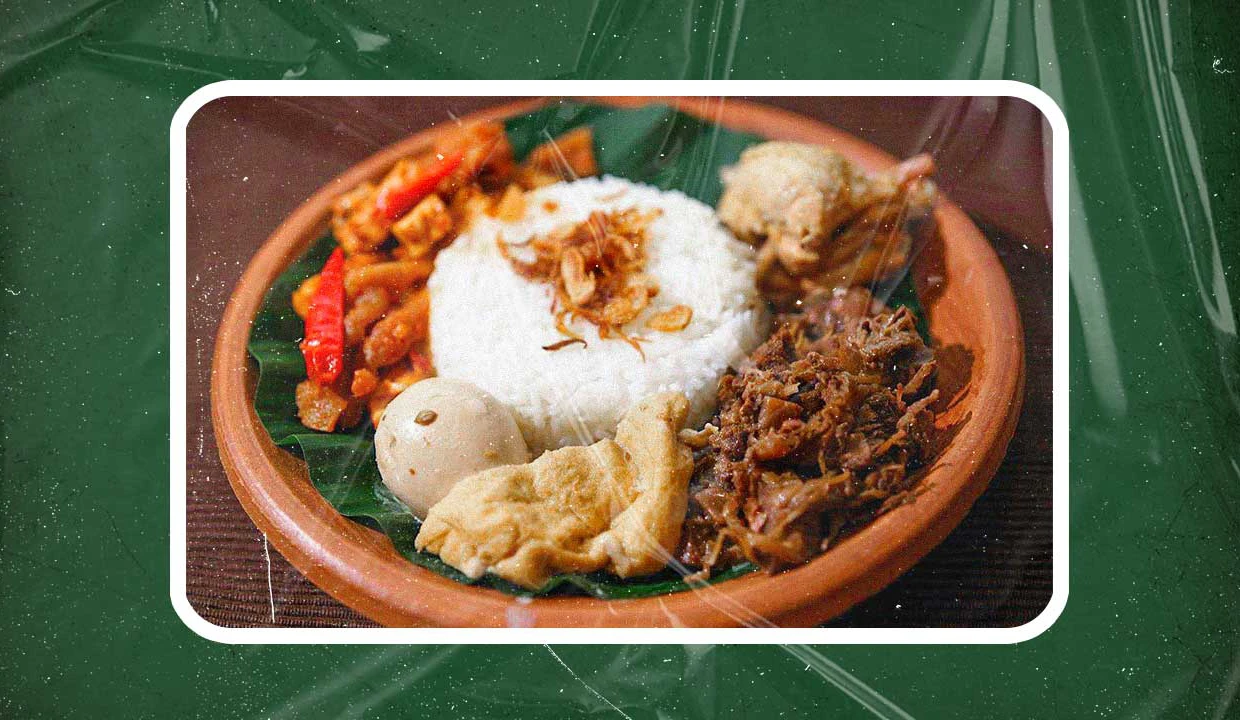GUDEG: A SYMBOL OF NOSTALGIA
Yogya always leaves the story for each person who visits the city.

Yogya always leaves the story for each person who visits the city. Like Rachma Safitri Yogasari shared her personal story on National Geographic Indonesia, she narrated the philosophy of its local culinary, gudeg. Not only saw gudeg as local food, but Rachma also had a deeper perspective. Gudeg is a symbol of nostalgia and a record of the city change of Yogyakarta. Here is the story.
I smelled pungent firewood when I visited the home kitchen of Yu Jum, one of the most well-known Gudeg makers in Karanggayam at noon. Eight employees shared their duty there. Two of them washed free-range chicken. Three others divided the chicken pieces into large buckets as portions, two stirred six large pots alternately, one left was in charge of ensuring the flames were on for the three large pots of marinated duck eggs.
Three people were sitting diligently making takir not far from the kitchen, the food mat like a bowl, made from banana leaves in the living room. Two of those three people are Mrs Djuwwariah or Yu Djum and Haryani Triwidodo, one of Yu Djum's daughters that is also ahead of recipes makers since the 2005 Karangasem production house.
"Gudeg is the way we cook. The ingredients are quite simple; only jackfruits with a lot of water, brown sugar, and salt. As simple as that," explained Haryani with a smile.
Explaining gudeg is actually like we explain batik or ikat. Gudeg is a cooking technique with a long process using brown sugar and salt as its natural preservatives. The common ingredients are young jackfruits, which are often called Gori or Tewel in Javanese. Aside from young jackfruits, we also use cassava, young bamboo shoots, mangor or coconut flowers, and kluwih (Artocarpus camansi).
Everyone can cook gudeg, the taste of gudeg depends on its maker's hands. That's why Yu Djum is not worried about opening classes for everyone who wants to learn to cook gudeg. Different hands, different tastes. "The taste can be different from all branches of Yu Djum's gudeg, it could be better. I always tell the truth to customers. Don't lie about the taste because it can't be 100% the same," explained Haryani. Honesty and humility make this family business survive even though another culinary school sprung up in Yogyakarta.
I was also curious how the makers’ hands transformed into a measuring scale for dozens of large cooking pots. Consistency in cooking is the answer. The maker could be the master due to the habit that she had practiced since she was a teenager, where she started to cook for the family.
"The right measurement because of the science of titen, " she said with a smile again. Titen or niteni means a habit that is done routinely every day with in-depth observation. They see, observe, memorize, and mark the cooking process present and past. For instance, the duration of cooking gudeg. "Yes, it can take less than 2 hours, but it's not good yet," said Haryani. After two hours, the sap of young jackfruits will disappear, and a savory taste slowly comes from the brown sugar and salt. The slow rhythm of the city of Yogyakarta reflects in its traditional menu with a long cooking process. All in no hurry.
Everyone has their memories about gudeg, whether to remember childhood or a family. But for me, gudeg is a kind of unique dish.
People from various regions across Indonesia started to attend Yogyakarta to study in the mid 1950s. Gudeg makers began to respond to people outside Yogyakarta who wanted to bring gudeg as souvenirs, making gudeg with a drier texture and thicker areh. With this form, it will be more lasting and without losing its delicious taste. Another key is on the traditional tools that they used.
"We still use firewood for cooking, even though there are offers to use gas stoves, which is more practice. But, with wood, is more economical and the fire control is on us," Haryani explained.
The center of gudeg stores is on Wijilan street, not far from the Yogyakarta Palace.
#THE S MEDIA #Media Milenial


























